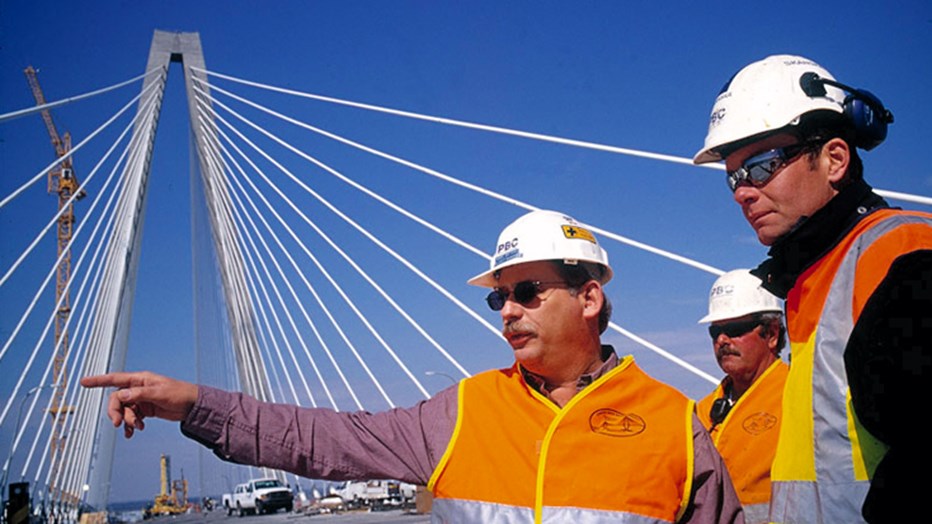Skanska, as managing partner of a joint venture, was awarded a design-build contract to construct a 2.5-mile bridge over the Cooper River from I-26 in Charleston to Coleman Boulevard in Mount Pleasant. The project, completed one year ahead of schedule, was a fast tracked with a total duration of 48 months for design and construction. The new bridge is eight lanes wide with a 12-foot-wide bicycle/pedestrian lane. The 1,546-foot main span, which is 186 feet above the river, is one of the longest cable-stayed spans in North America providing for eight lanes of traffic. The bridge was designed to meet stringent standards –category 5 hurricanes, earthquakes measuring up to 7.3, and impacts from some of the largest freighters in the world. The towers were designed to look like sails on a boat to complement the nearby Port of Charleston. In fact, the bridge greatly enhances shipping accessibility to the Port, provides economic development to the entire area and serves as a stunning visual landmark. The bridge has won multiple awards for design, construction, and environmental responsibility.
Developing the project
Parsons Brinckerhoff (PB) was the lead bridge designer. They designed the main span unit which, since completed, is the longest cable-stayed main span in North America.
Constructing the project
During construction, more than forty cranes were used to lift and place steel casings, cages, formwork and concrete girders. The two diamond towers were constructed with almost 22,000 cubic yards of concrete, 3,700 tons of reinforcing steel, with each extending 572.5 feet in the air. The main span deck was built 186 feet above the mean high tide mark in the Cooper River to greatly enhance shipping accessibility to Port Charleston. The completed bridge is made up of 300,000 cubic yards of concrete, 50,000 tons of reinforcing steel and 40,000 tons of structural steel.
Environment
The land from the old bridges is being used to create open park space and public access to the waterfront. Foundations from the old Pearman Bridge were reused to build a public pier.
Benefits for the community
In Charleston, land will be redeveloped in a partnership with the city to create affordable housing, parks and economic opportunities for the East Side neighborhood.




